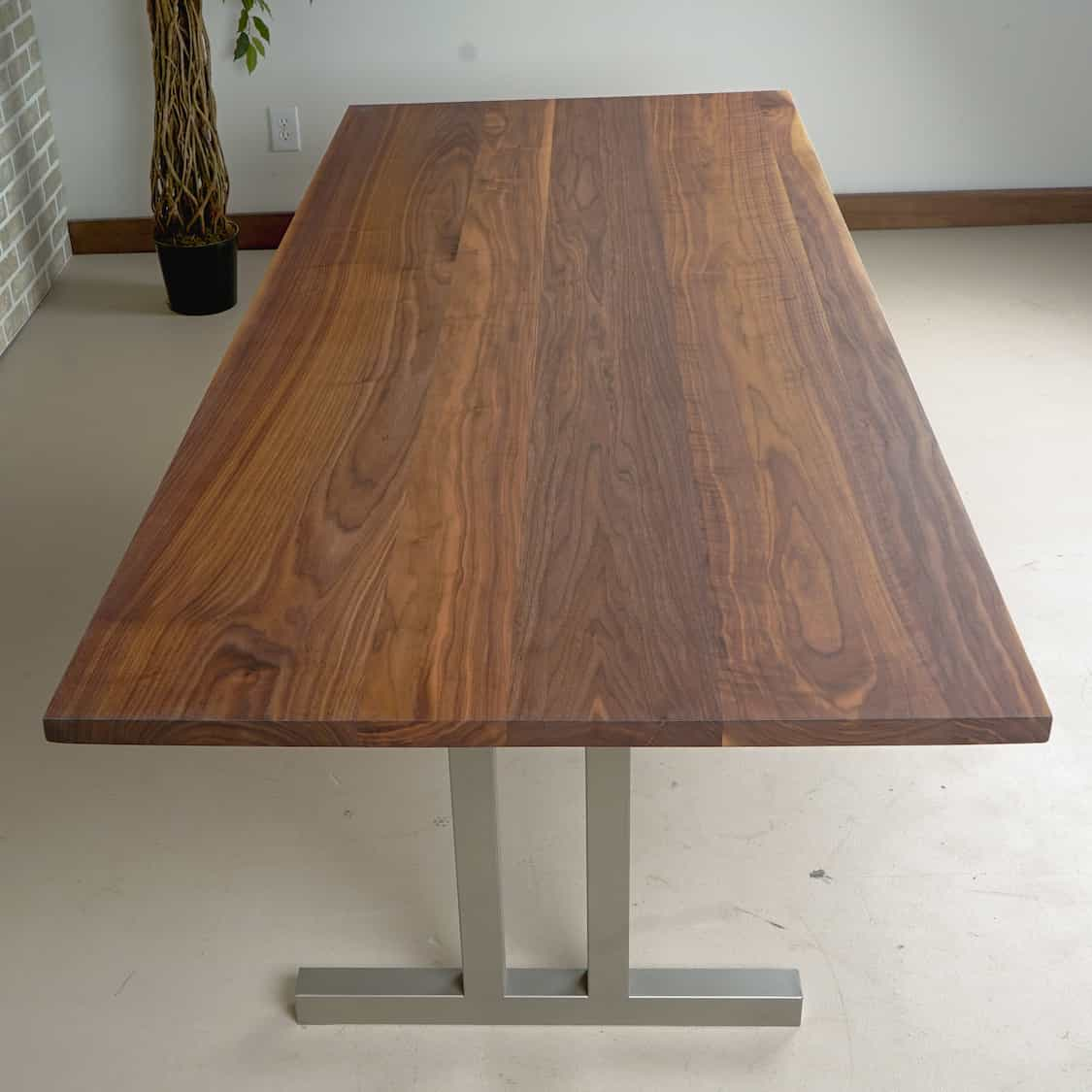Add a Rustic Touch to Your Table with Classic Dining Table Legs Wood
Add a Rustic Touch to Your Table with Classic Dining Table Legs Wood
Blog Article
Exploring the Different Kinds of Table Legs Wood for Your Eating Area
The choice of eating table legs wood can exceptionally influence both the visual and functional qualities of your dining area. Solid wood alternatives, such as oak and walnut, give a traditional appearance with unmatched toughness, while crafted timber alternatives provide ingenious layouts that resemble the splendor of all-natural grains.
Strong Timber Options

Additionally, strong wood is renowned for its strength and durability. Unlike crafted materials, solid timber is much less prone to warping and damages in time when appropriately kept. This makes it an optimal selection for family members or those who frequently hold events. Each item of strong timber is one-of-a-kind, showcasing specific attributes that include in the beauty and personality of the eating table.
Furthermore, solid wood can be finished in various ways, ranging from natural oils to stained coatings, allowing house owners to individualize their furnishings to match their decoration. In recap, choosing strong timber for eating table legs not just guarantees architectural integrity however also enhances the visual allure of the dining area, making it a rewarding financial investment for any kind of home.
Engineered Wood Alternatives

Plywood, constructed from multiple layers of timber veneer, is stable and particularly solid, making it an outstanding choice for eating table legs. Its layered composition permits it to endure changes in moisture and temperature far better than standard solid timber. MDF, on the various other hand, offers a smooth surface area for painting or veneering, making it possible for designers to achieve a refined look while keeping structural honesty.
When selecting engineered wood options, it is essential to consider the designated use and preferred aesthetic. These materials not only improve the performance of eating areas however additionally permit for greater design flexibility, ensuring that contemporary and traditional styles can coexist harmoniously.
Reclaimed Timber Features
Reclaimed wood uses an unique blend of sustainability and character, making it a progressively popular option for eating table legs. Sourced from old barns, factories, and various other structures, redeemed timber personifies a background that new materials simply can not duplicate. Each piece brings its very own story, marked by distinctive blemishes, knots, and varying grain patterns, which contribute to a table's unique visual allure.
In enhancement to its visual charm, reclaimed timber is an eco-friendly alternative. By repurposing formerly used products, it minimizes the demand for new lumber, hence assisting to save woodlands and decrease waste. This straightens with an expanding customer choice for lasting methods in furniture.
Furthermore, redeemed timber is typically more durable than recently gathered timber because of its age. The all-natural drying out process that recovered wood undertakes cause a denser and stronger material, this link making it less vulnerable to warping and splitting. This enhances the long life of eating tables, permitting them to hold up against the roughness of daily use.
Softwood vs. Wood
When selecting dining table legs, recognizing the distinctions in between softwood and wood is important for accomplishing both aesthetic and practical goals. They typically show a more rustic appearance, making them ideal for country-style or informal eating areas.
On the other hand, woods, sourced from deciduous trees like oak, maple, and cherry, are renowned for their thickness, strength, and resilience. The complex grain patterns and abundant hues of hardwoods supply a timeless and advanced appeal, making them suitable for formal dining setups. While hardwoods tend to be extra pricey and larger, their durability against deterioration often justifies the financial investment.
Ultimately, the choice in between softwood and hardwood for eating table legs must align with your design vision, usage needs, and budget plan, ensuring that your eating area mirrors your individual design while continuing to be practical with time.

Therapies and surfaces
The aesthetic allure and long life of eating table legs can be dramatically improved through numerous finishes and therapies. These procedures not only safeguard the wood from damages but additionally boost its look, allowing it to match diverse indoor designs.
One common therapy is staining, which passes useful site through the wood and enhances its all-natural grain while adding color. Spots offer an abundant, stylish look, making it possible for home owners to match their furniture with existing decoration. Conversely, clear finishes such as polyurethane or varnish create a safety layer without changing the timber's original tone, ensuring durability against wear and tear.
Additionally, all-natural oils, like tung or linseed oil, nourish the wood and supply a subtle luster, all while being environmentally friendly. These oils allow the surface to breathe, stopping dampness accumulation and prospective warping.
For those looking for a rustic appeal, troubled or weathered finishes can be related to develop an aged appearance, including personality to the item. Eventually, the option of coatings and treatments relies on individual choice, desired aesthetic appeals, and the specific wood kind, making it vital to take into consideration these elements when picking table legs for your room.
Verdict
Solid woods, engineered alternatives, and redeemed alternatives each offer distinct advantages, catering to wikipedia reference various choices and needs. Ultimately, the option of timber type ought to line up with preferred style, longevity, and ecological considerations, improving the total dining experience.
The option of eating table legs wood can profoundly affect both the aesthetic and practical high qualities of your dining room - Dining Table Legs Wood. Strong timber alternatives, such as oak and walnut, supply a traditional appearance with unequaled toughness, while crafted wood alternatives offer innovative styles that resemble the splendor of natural grains. Solid wood uses an ageless high quality that can boost the total layout of a dining room. Each piece of strong timber is unique, showcasing individual characteristics that add to the beauty and personality of the eating table
In addition, redeemed wood is frequently extra durable than recently gathered wood due to its age.
Report this page